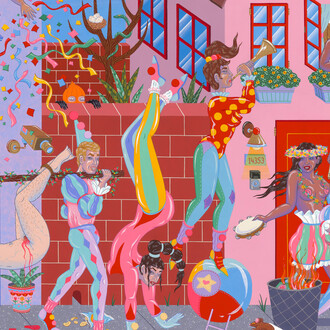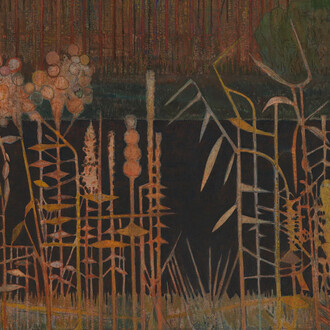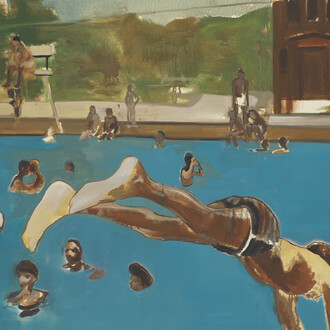Blum is pleased to present Polish artist Wilhelm Sasnal’s first solo exhibition with the gallery.
Resisting a singular painting style—abstractions edging in on dreamy figuration—for his first exhibition at Blum, Wilhelm Sasnal explores the iconography and visual lexicon of the roadways of Southern California. Painting from photographs and sketches, Sasnal captures imagery from a brief time spent living in Los Angeles as a cyclist—someone intimately familiar with the texture, palette, and imagery of the region's thoroughfares. The resulting body of work shares themes with film noir—examining the complexities of black as a lack of color; these vignettes are all at once dramatic, brooding, and exhilarating.
After studying painting at the Academy of Fine Arts in Kraków, Sasnal set out to create paintings that undid the restrictive methodology associated with formal painting. Making work that was more about drawing with paint than painting and preferring graphic novels or record covers as his guidance over the Old Masters, Sasnal built his career around this idea of flipping painting on its head. This included bringing subjects rendered in black to the forefront of his compositions, thus reversing the guiding principles of chiaroscuro, a painting fundamental that harks back to the Renaissance and Baroque periods.
Presently, Sasnal is an avid pupil of the art historical canon—taking inspiration from and pushing back against a wide array of sources, such as Edgar Degas and Sigmar Polke—but his enthusiasm for this discourse is still laced with a persistent contrarian spirit. Retaining a fixation on black as a pause for the eye in traditional compositions, Sasnal asserts stripes of black paint—a compositional rest—atop the busyness of landscapes rendered in pale color. In All American (2025), for instance, the work’s titular words float amid the desert horizon as if roads were paved in midair.
Asphalt takes a paramount position in this exhibition, both for its physical characteristics and conceptual implications. Sasnal immerses himself in the many facets of this substance, becoming absorbed in it in the intimate way that only a cyclist could. When he conveys his findings, it is with the sensibilities of an artist who is keenly attuned to semiotics, color theory, depth, and perspective. For its external implications, Sasnal notes that asphalt is made of petrol, which gestures at a wealth of global issues. Asphalt also contains a complex spectrum of black, which Sasnal expresses through a range of gestures from snaking abstract lines to solid-edged blocks of pigment. Roads are also notable for their traditional usage in perspective, requiring only two receding lines and a horizon point to express depth.
Sasnal paints in a medium-specific manner, but his mode of culling subject matter is multidisciplinary. Archiving and reflecting culture’s nuances back upon itself, in this exhibition, Sasnal took photographs, kept a sketching practice, and borrowed typeface while collecting notable moments or ideas for future paintings. The works Palmdale 1 and Palmdale 2 (both 2025), for instance, are painted from photographs that the artist took streetside while cycling. Noticing the presence of several fighter jets parked just within the parameters of a military base near Palmdale, California, the artist recorded this unexpected and ominous encounter with his camera. Later, when creating his compositions for each work, these massive weapons become abstracted, shadowy figures to convey and isolate the unique feeling imparted upon the viewer when seeing the original. With his brush to canvas acting as the lens through which these found talismans of our society are given meaning, Sasnal is not merely a documentarian but also a philosopher of the overlooked.
















